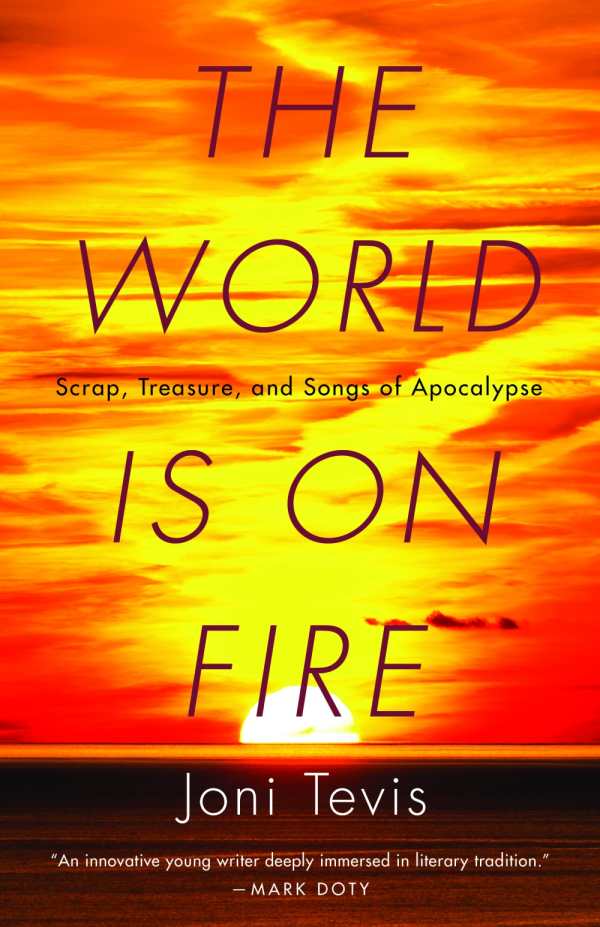The World Is on Fire
Scrap, Treasure, and Songs of Apocalypse
This ambitious collection of Americana-themed essays blends travel, personal anecdote, history, and science.
The pieces in The World Is on Fire, Joni Tevis’s second work of creative nonfiction, tread a fine line between essays and short stories; they so prioritize dialogue and incident that they have the vibrancy of fiction. Throughout, Tevis zealously interrogates emblems of apocalypse: deserts, atomic bombs, and the book of Revelation.
Tevis doggedly investigates the aftermath of the atom bomb, visiting Nevada’s test site and Los Alamos in “Damn Cold in February” and “Beautiful Beyond Belief.” The former incorporates other events from the “atomic summer” of 1957: Buddy Holly’s death, John Wayne’s The Searchers, and even the invention of the hula hoop. Other pieces explore North Dakota ghost towns, the Arctic National Wildlife Refuge, and medical museums in Philadelphia and Italy. Tevis also profiles mill workers, an auctioneer, a glassblower, Liberace, and a South Carolina blade sharpener.
The religious implications of apocalypse are inescapable: John the Beloved Disciple appears in a play and on a trip to Patmos, and visions of blood recur. Though Tevis was obsessed with the book of Revelation as a girl, she sees parenthood as validation of a hopeful future: “the act of having a child flies in the face of actual belief in apocalypse.”
This astute essayist notices everything, down to Alaskan lichen. She highlights less-visited sites and unearths details most tourists miss. At Winchester Mystery House in San Jose, she invites readers to “linger over its crabbed lines, fish-scale shingles and old-growth redwood.” Personal details are deftly interwoven, as in “Somebody to Love,” where an intimate account of infertility is interspersed with a minibiography of singer Freddie Mercury.
However, the catholicity of Tevis’s interest means she does not always bring multiple strands together convincingly. Multipart essays are strung together with sometimes superfluous epigraph-like quotes, loose themes inconsistently join the disparate topics, and the purpose of the acts/intermission structure is unclear. Still, the author’s reach is impressive.
With these atmospheric, offbeat essays, Tevis rivals Barbara Kingsolver, Rebecca Solnit, John Jeremiah Sullivan, and Terry Tempest Williams.
Reviewed by
Rebecca Foster
Disclosure: This article is not an endorsement, but a review. The publisher of this book provided free copies of the book to have their book reviewed by a professional reviewer. No fee was paid by the publisher for this review. Foreword Reviews only recommends books that we love. Foreword Magazine, Inc. is disclosing this in accordance with the Federal Trade Commission’s 16 CFR, Part 255.

